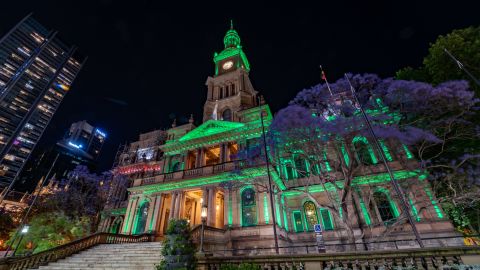From 31 October to 12 November leaders from around the world meet in Glasgow for COP26 to discuss avoiding climate catastrophe.
Many scientists, environmental agencies, governments and community leaders consider this year’s summit the most important meeting since the Paris agreement was reached in 2015.
These are a few key reasons:
For the first time, nations need to disclose their plans – known as nationally determined contributions – to reduce carbon dioxide emissions and reach net zero by 2050.
It’s the first meeting since the most important climate science update for almost a decade – known as the IPCC report – was released. The report indicates there's a narrow path to avoiding climate catastrophe, but only if global emissions are cut in half by 2030. Unfortunately, considering current commitments, the UN estimates emissions will rise by 16% instead.
Parties are pushing to finalise the Paris rulebook – to create the rules required to make the Paris agreement operational and keep nations accountable for their actions and inaction. Dodgy accounting must also be penalised. For example, forbidding countries to use carbon credits from other countries.
Some of the commitments made in Glasgow could affect our daily lives. We could see more electric cars, a move away from gas heating, and a push to eat less red meat sooner than expected.
Read on to learn more about COP26 and how you can attend some of the events in Glasgow virtually.
What COP26 is
COP is the annual climate change conference organised by the United Nations.
COP stands for Conference of the Parties. The parties refer to the 197 parties (196 countries and the European Union) that signed the 1994 United Nations Framework Convention on Climate Change (UNFCC) treaty.
It’s COP26 because it’s the 26th time the summit has been held.
You may hear the Paris agreement spoken about a lot in the media. The Paris agreement was made at COP21 in 2015.
Embedded content: https://www.youtube.com/watch?v=hNzr75MbzZs&ab_channel=COP26
What happens at COP
Reportedly COP is a high-octane event where no one sleeps.
At the heart of COP are lots of complex negotiations between government officials from every country in the world.
But it’s not only national leaders like Scott Morrison who attend.
COP also attracts tens of thousands of negotiators, lobbyists – including fossil fuel advocates – businesses, artists, global media representatives and general citizens.
The activity at COP26 is split into 2 zones:
Blue zone – delegates from countries meet for both formal negotiations and informal consultations. They may also attend technical briefings to support negotiations.
Green zone – the general public attend workshops, art exhibitions, installations, presentations, and demonstrations of technology.
While the official negotiations happen in the blue zone, a bit of lobbying happens between the zones. Some politicians will talk with campaigners, media, and businesses to let them know what’s going on in the official negotiations. They’ll give them a heads-up on who they might need to pressure for their cause.
See the blue zone presidency program.

Why COP26 is important
At COP21 in Paris in 2015, almost all countries agreed – for the first time ever – to enter a legally binding commitment to reduce emissions.
They also agreed to come back with an updated plan every 5 years to keep global warming well below 2 degrees and aim for 1.5 degrees above industrial levels.
But no one said how they were going to do it. And the commitments made are still nowhere close to limiting global warming to 1.5 degrees and protecting a comfortable way of life.
Also, the checks and balances to keep countries honest and accountable for reducing their emissions remain unresolved.
So, one of the main goals of COP26 is to finalise the Paris rulebook – to create the rules required to make the Paris agreement operational.
Another key goal is to mobilise finance – to find ways to get $100 billion to developing nations every year to protect and restore ecosystems.
Embedded content: https://twitter.com/COP26/status/1454750000575959056
How Australia compares
The UK plans to reduce its emissions by 68% by 2030. In 2012, 40% of electricity in the UK came from coal. Now less than 2% comes from coal.
In the US, Joe Biden has pledged to reduce his country’s emissions by 50 to 52% by 2030.
So where are we at down under?
Based on the latest science, and taking into account Australia’s national circumstances, the Climate Council concluded Australia should reduce its emissions by 75% below 2005 levels by 2030, and achieve net zero emissions by 2035.
All Australian states and territories have endorsed net zero targets which has us on track to achieving 37 to 42% by 2030. Even the Business Council of Australia supports a 50% target by 2030.
Despite all this, Scott Morrison recently confirmed Australia will stick to its formal 2030 target of a 26% to 28% cut compared to 2005 levels. Because of this, Australia is considered one of the countries with the least ambition.
What the City of Sydney is doing
While we’re not at the main table at COP, reserved for nation leaders, we belong to a progressive coalition of more than 1000 cities and local governments.
Members of the UN backed C40 Cities Race to Zero campaign concentrate on immediate actions rather than simply talking about targets for mid-century.
Every member is committed to halving emissions by 2030 and achieving net zero emissions as soon as possible.
This represents the most aggressive set of commitments of any group at COP26.
Randwick, Lane Cove, Willoughby, and Hunter’s Hill in the Greater Sydney region as well as Adelaide and Darwin city council, have joined us in pledging their support for the project.
As C40 cities at COP26, we’re calling on national and regional governments, central banks and international financial institutions to support cities so they can deliver on their commitments.
We’re advocating for:
Public development banks and private banks to terminate fossil fuel financing and to make it easier for cities to access finance. Cities need more money to develop and complete projects that will help mitigate the effects of climate change, such as urban greening and flood-prevention infrastructure.
National governments and donors to help fund projects that will help cities adapt to and mitigate the effects of climate change. Funds need to be provided urgently to cities in developing nations that are most affected by the climate crisis and suffering a disproportionate amount of the cost.
National governments and donors to integrate urban climate action into their national climate strategies and economic recovery packages, and to simplify access to finance.
How to get involved in COP26
There’s an incredible amount of positive change happening around the world. Feel connected to like-minded people, reignite your hope, and learn about some of the latest technologies.
Published 2 November 2021



